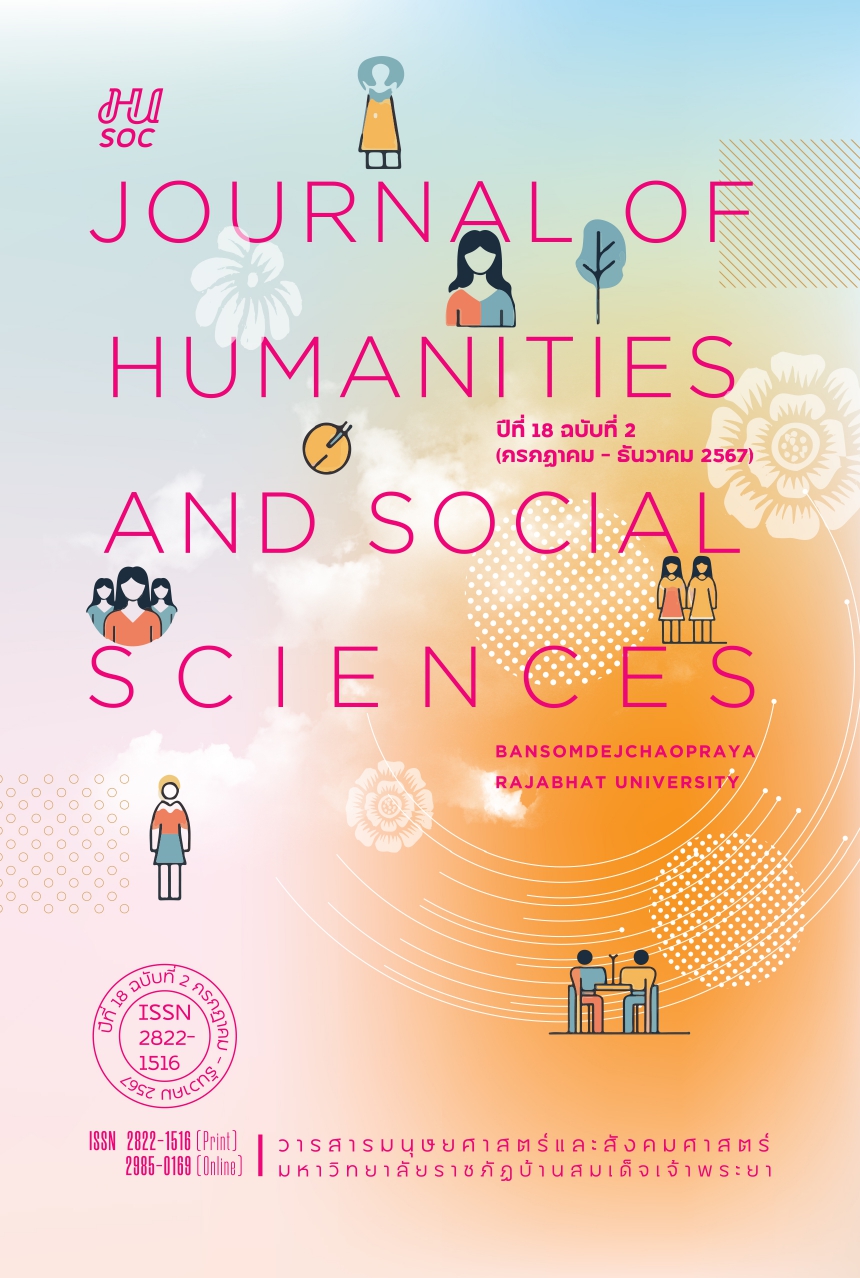น้ำพริก: มรดกภูมิปัญญาทางวัฒนธรรมในสังคมไทย-จีน
คำสำคัญ:
น้ำพริก, มรดกภูมิปัญญา, วัฒนธรรม, ไทย-จีนบทคัดย่อ
บทความวิจัยนี้ ศึกษาวิเคราะห์จากบทอ่านในหนังสืออ่านเพิ่มเติมเรื่องน้ำพริกที่ขึ้นทะเบียนมรดกภูมิปัญญาทางวัฒนธรรม สำหรับนักศึกษาชาวจีน มีวัตถุประสงค์เพื่อศึกษาภูมิปัญญาวัฒนธรรม เรื่องน้ำพริกใน หนังสืออ่านเพิ่มเติมเรื่องน้ำพริกที่ขึ้นทะเบียนมรดกภูมิปัญญาด้านวัฒนธรรมในบริบทสังคมไทยกับสังคมจีน ผลการศึกษาพบว่า น้ำพริกมีเครื่องปรุงที่มีคุณค่าทางโภชนาการมีประโยชน์ต่อสุขภาพของผู้บริโภคในทางการแพทย์ และภูมิปัญญาไทย ใช้เครื่องปรุงน้ำพริกเป็นสมุนไพรมีสรรพคุณบรรเทาและบำบัดอาการเจ็บป่วยได้ และน้ำพริกเผาของชาวจีน ก็มีคุณค่าทางโภชการและมีสรรพคุณในการรักษาโรคบางโรคได้ และยังสะท้อนภูมิปัญญาด้านความเชื่อว่าน้ำพริกมีความหมายด้านความเจริญรุ่งเรือง ความรักที่ยิ่งยืนนาน และยังช่วยป้องกันผีร้ายได้ด้วย
เอกสารอ้างอิง
Calforlife. (2020). Calorie & Nutrient Database and Food Tracker & Calorie Counter. Retrieved 2 July 2023, https://www.calforlife.com/th
Cao, Y. (2019). The History of Spicy Food in China. Beijing United Publishiing.
Health book editor. (2012). Healthy vegetables. Se-education Public Company Limited.
IVF. CAAS. (2010). Olericulture in China. China Agriculture Press.
Medthai. (2020). Fruits and vegetables: 14 benefits of fruits and vegetables!. Retrieved 9 July 2023. https://medthai.com
Niramon, Y. (2007). Nam Prik: Food resource base, community way of life under globalization. BioThai Foundation. 13-22. [In Thai]
Phornphan, T. (1996). Nam Phrik: The popular Thai food. Silpakorn Journal, 39(1), 83-85.
Satarat, T. (2018). Document teaching on Thai food. Luknam Prints. [In Thai]
Srisamorn, K. (2018). Registered food: national cultural heritage. MP/so.so.so.so. [In Thai]
Srisamorn, K. (2019). Thai Samrub, the identity of taste cultural heritage. MP/so.so.so.so. [In Thai]
Srisamorn, K. (2022). Table food. MP/so.so.so.so. [In Thai]
Su, W. (2023). Supplementary Reading Book: Namprig as a Registered and Intangible Cultural Heritage’ For Chinese Students. Srinakharinwirot University. [In Thai]
Supranee, L. (2013). Project to collect and store information on cultural heritage: topic: Nam Prik. Suphanburi National Library. [In Thai]
Wang, S. X. (2003). Recipe of Suixiju. Tianjin Science and Technology Press.
Wu, B. A. (2014). Chinese Folklore. Changchun Publishing House.
Wu, M. L. (2022). Research on Sichuan-Chongqing Pepper Folk Culture. [Master’s dissertation, Shanxil Normal University, China].
Yang, S. Q. Y., & Ren, Z. Y. (2018). Thai reading (1). World Publishing Corporation.
Yang, X., & Zhao, D. (2021). International communication of Guizhou’s “Laoganma” cultural brand. Journal of Business and Management, 2021(2). 65-68.
Yang, W. X., & Chen, S. F. (2016). Thai for Tourism. Beijing Hope Electronic Press.
ดาวน์โหลด
เผยแพร่แล้ว
รูปแบบการอ้างอิง
ฉบับ
ประเภทบทความ
สัญญาอนุญาต
ลิขสิทธิ์ (c) 2024 คณะมนุษยศาสตร์และสังคมศาสตร์ มหาวิทยาลัยราชภัฏบ้านสมเด็จเจ้าพระยา

อนุญาตภายใต้เงื่อนไข Creative Commons Attribution-NonCommercial-NoDerivatives 4.0 International License.




